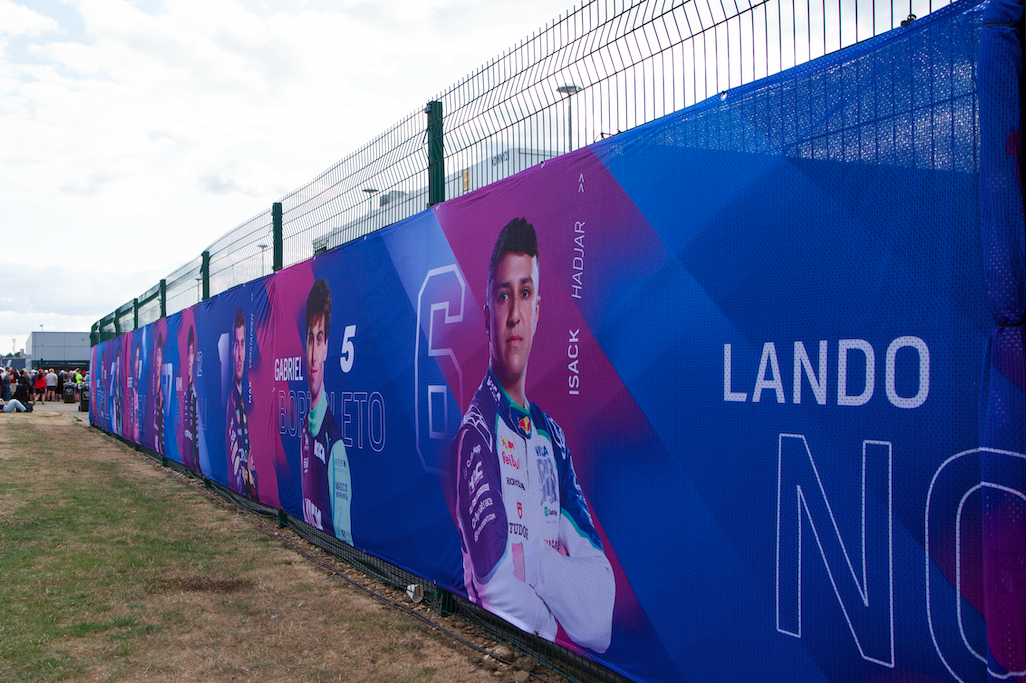

X
This site uses cookies. By continuing to use this site you agree to our use of cookies. To find out more, see our Privacy Policy and Cookie Policy.

When you think of sporting events, you probably picture the roaring crowds, the athletes giving their all on the field, and the electric atmosphere. What you don’t usually think about is the scrim — those printed or mesh banners surrounding the perimeter of the event. But scrim plays a much bigger role than most people realise, impacting everything from branding to crowd control.

In the context of sporting events, scrim usually refers to vinyl or mesh fabric banners that wrap around fences, scaffolding, and construction zones or serve as backdrops. It’s often printed with logos, advertisements, or designs specific to the event.
Scrim is prime real estate for branding. At live events — and even more so during televised broadcasts — the areas around the field or court are where viewers’ eyes naturally land. Scrim covered in sponsor logos gives companies valuable exposure and helps event organisers fulfill advertising commitments.
For smaller or local events, scrim is also a great way to support community businesses and showcase event partners in a professional way. Without it, sponsors lose visibility, which can reduce future financial support.
Scrim isn’t just about looks — it has practical uses, too. Event organisers often use it to direct the flow of foot traffic or block off restricted areas. Mesh scrim, in particular, provides wind flow while still acting as a barrier. This makes it ideal for outdoor venues where safety and crowd management are critical.
When used along fencing, scrim can help keep unauthorised people out of sensitive areas like locker rooms, tunnels, or technical zones. It can even help prevent distractions for athletes.

Even the most thrilling event can look unfinished or disorganised without proper signage. Scrim helps unify the visual branding of an event, making everything look intentional and high-quality. Whether it’s a youth football tournament or a national championship, custom scrim elevates the environment and signals that the event is well-organised and legit.
Sometimes, scrim is used to shield certain areas from view — such as warm-up zones, media areas, or even construction happening behind the scenes. This ensures that athletes can focus, and the audience only sees what they’re supposed to. It’s a subtle way to enhance both the athlete and spectator experience.
Unlike some signage that might blow away or get damaged in bad weather, mesh scrim is designed to withstand the elements. It’s breathable, reducing wind resistance, and the material holds up under rain or sun. That durability makes it a smart long-term investment for recurring events.
Scrim might not be the first thing fans notice, but it’s one of the most important pieces of infrastructure at a sporting event. It blends function with design — offering branding opportunities, improving safety, and upgrading the visual experience. Next time you attend a game, take a second to appreciate the scrim. It’s working harder than you think.